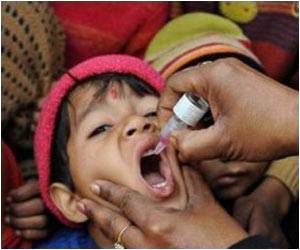Forget the BRIC report, India being the next ‘ global giant’ and all that. Women’s empowerment in India is still right at the bottom, gives the World Economic Forum report. When it comes to the fairer sex’s participation in the economic agenda, India lies among the bottom 10.
The World Economic Forum’s most recent Gender Gap Index report was released over the weekend. According to figures, India has been placed at the 114th position after taking into account economic, political, and educational and health parities. This is among a total of 128 countries.In terms of “economic participation and opportunity”, India has fared worse than last year — at 122nd position, slipping into the bottom 10 list.
In overall rankings, the country has gone down from its 98th rank in 2006 when the index included a total of 115 countries.
This year Sweden has crowned the Gender Gap Index, with a gender equality of 81.5 per cent, followed by Norway, Finland, Iceland and New Zealand.
The countries ranked below India include Bahrain, Cameroon, Burkina Faso, Iran, Oman, Egypt, Turkey, Morocco, Benin, Saudi Arabia, Nepal, Pakistan, Chad and Yemen (with the lowest gender equality of 45.1 per cent).
According to the report, India has an overall 59.4 per cent gender equality, while for economic participation and opportunity it stands at 39.8 per cent.
Advertisement
Coming to gender equality or the lack thereof, take a look at this case.
Advertisement
An year back, after a sum of Rs 6,000 changed hands, the ‘bahu’ found herself in a ‘foreign‘ place -where Bengali gave way to Haryanvi, rice to roti — and where cattle are worth more than women like her, who are referred to as paros by the locals.
In the moneyed districts of Haryana and Punjab — where a preference for the male has resulted in a skewed sex ratio — girls from economically weaker backgrounds in Bihar, Jharkhand, Orissa and West Bengal are being openly bought in droves for ‘marriages’. More often than not , they are unwilling brides.
The legal status of such wedlock, of course, remains doubtful. According to Shaktivahini, a Faridabad-based NGO dealing with anti-trafficking issues, there are up to 50,000 paros in Haryana alone. a huge part of these are minors too. Faced with such a crisis, even vote banks are built on promises of getting brides!
Though Census 2001 shows the child sex ratio in Haryana and Punjab as 820 and 793 per 1,000 boys respectively, the latest health survey by the Punjab government has given that villages like Sansarwal in Patiala have touched an alarming 438 girls per 1,000 boys.
A recent United Nations Population Fund (UNFPA) report has warned that female deficit in the marriageable age (20-49) is set to touch a record 25 million by the year 2030.
The impact is already being felt here. Says Dr Madhav Mohan Godbole, the director of Balgrah, a rehabilitation centre in Rai, Sonepat, “Villagers come to us and plead for brides. They say if we can’t fix them up, they will be forced to buy girls.” Ram Prasad of Seoti village in Sonepat, concedes, “frequent trips are being made from all over Haryana to hunt for girls in Bengal, Orissa, Jharkhand and even Maharashtra.”
What happens during these ‘purchases’?
“Someone with ‘contacts’ in source states facilitates such arrangements in return for kharcha-paani,” explains Rishikant of Shativahini. The ‘going rate’ ranges from Rs 6,000 –10,000, depending on the age and virginity. Forced by poverty, many a time the paros also have to ‘accept’ polyandry.
Paradoxically, it is now the parents of would-be brides who are calling the shots. No one wants a poor or unemployed groom, says Akbar Ahmed of Malabnuhu. Neither are they willing to send their girls to the land of paros.
Even so, stories of abuse abound. Ameena, 13, was sold to a 35-year-old widower Ashok in Seoti.
“Ashok would lock me up in a room, beat me up and sexually abuse me. He wouldn’t let me talk to my mother,” recalls Ameena, who tried to escape a couple of times. She was finally rescued by Delhi-based NGO Prayas just last month. “He was so much older, and there was a lot of communication problem. So I was just supposed to say yes to whatever he demanded”, she says.
Ameena’s was the first case of trafficking registered in Haryana, as women seldom register complaints due to social pressures.
The UNFPA report gives that it is the poor and landless men who will be most affected by this bridal crisis. Just so, 35-year-old Anwari who was, many years ago, married to a man 20 years older than her in Malabnuhu, worries for her four boys. “They don’t study. Maybe, I will have to buy brides for them also.”
Source-Medindia
ANN/V





